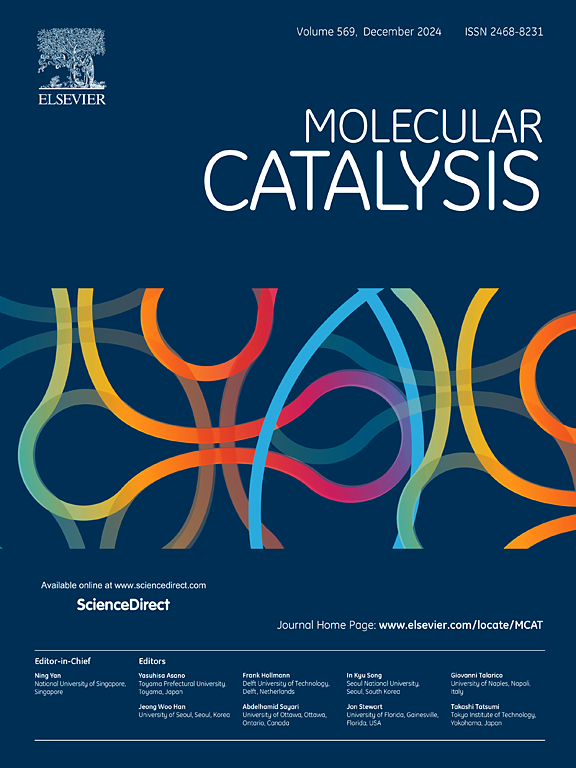First-principles study of oxygen evolution reaction on CeNi-doping Co3O4(110)
IF 3.9
2区 化学
Q2 CHEMISTRY, PHYSICAL
引用次数: 0
Abstract
Electrocatalytic water splitting driven by renewable electricity has become one of the most prospective and effective ways to solve energy issues. However, the practical process was limited by the development of electrocatalysts with high activity and low cost. In the search for new electrocatalysts, the researchers pay attention to the typical Co3O4 materials in oxygen evolution reaction (OER), due to its great electrocatalytic performance. In this work, using first-principles calculations, we studied the OER performance by adjusting the proportion and position of Ni (1∼8) and by fixing the Ce position on CeNi-Co3O4 (CeNiCo). It was found that the case of only one Ni doping (NiaCoaCe) had the lower overpotential (0.22 V) with Co as active site and appropriate Ce-Ni distance than that of pure Co3O4 (0.36 V). Then, electron localization function showed that a degree of covalency Ce-ONi-Co (Ni in sublayer) in the case of NiaCoaCe was higher than that of Co-O-Co in pure Co3O4. Furthermore, analyzing the density of states in different doping cases could understand the origin of distinct OER activity. Additionally, the results of formation energy and dissolution energy indicate that CeNiCo exhibits good stability when Ni is at a suitable position and in an appropriate proportion. Finally, ab initio molecular dynamics simulations (AIMD) also indicated that NiaCoaCe had better thermodynamic stability. It was anticipated that our work will provide further insights into the effects of different doping number and positions on catalyst performance, and help guide the design and synthesis of more efficient OER catalysts in the future

求助全文
约1分钟内获得全文
求助全文
来源期刊

Molecular Catalysis
Chemical Engineering-Process Chemistry and Technology
CiteScore
6.90
自引率
10.90%
发文量
700
审稿时长
40 days
期刊介绍:
Molecular Catalysis publishes full papers that are original, rigorous, and scholarly contributions examining the molecular and atomic aspects of catalytic activation and reaction mechanisms. The fields covered are:
Heterogeneous catalysis including immobilized molecular catalysts
Homogeneous catalysis including organocatalysis, organometallic catalysis and biocatalysis
Photo- and electrochemistry
Theoretical aspects of catalysis analyzed by computational methods
 求助内容:
求助内容: 应助结果提醒方式:
应助结果提醒方式:


